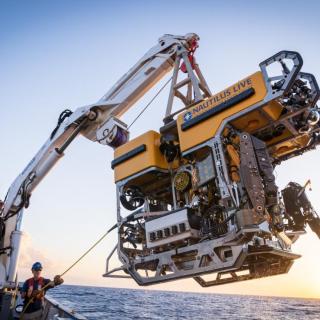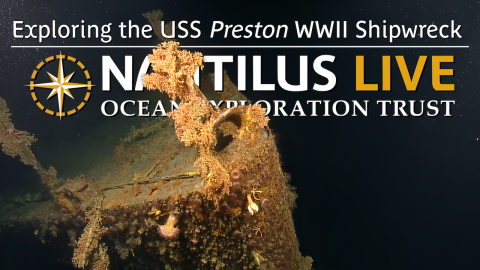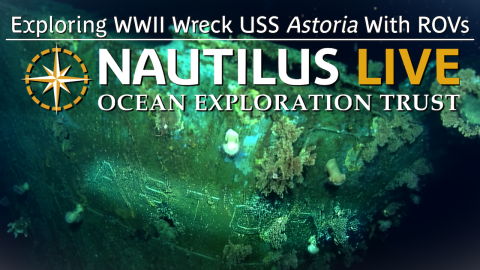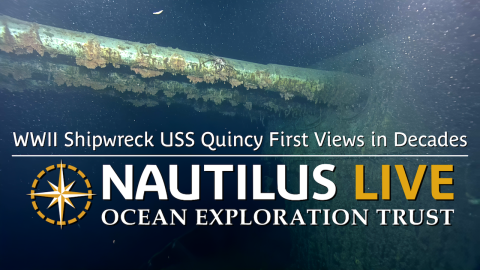Exploring WWII Shipwreck IJN Yūdachi
During our exploration of the waters of the Iron Bottom Sounds, our team of scientists, archeologists, and explorers made a visual survey of the Japanese destroyer Yūdachi (夕立). After passing over the wreck with NORBIT sonar, our ROVs commenced a counterclockwise circumnavigation starting from the starboard side of the stern. Interestingly, this ship wreck exhibited significant deterioration compared to previously surveyed sites in the area, including the fully collapsed stern, the aft gun fallen to port, and both the aft and forward torpedo launchers. The IJN Yūdachi sank on November 13, 1942, during the First Naval Battle of Guadalcanal. Dr. Robert Ballard first discovered the wreck in 1992 with ROVs, and it was later imaged by Vulcan in 2015.
During the Maritime Archaeology of Guadalcanal: Iron Bottom Sound (NA173) expedition, our international team utilized the remotely operated vehicle and telepresence systems of E/V Nautilus, in combination with the mapping capabilities of uncrewed surface vehicle DriX, to conduct non-invasive archaeological surveys of cultural heritage sites in the Iron Bottom Sound. This expedition is supported by NOAA Ocean Exploration via the Ocean Exploration Cooperative Institute. This exploration is made possible by the expertise, support, and collaboration of many partners, including NOAA Ocean Exploration, U.S. Naval History and Heritage Command, Solomon Islands government, University of New Hampshire Center for Coastal and Ocean Mapping/Joint Hydrographic Center, University of Rhode Island, and Japanese, Australian, and New Zealand archaeological colleagues.

Maritime Archaeology of Guadalcanal: Iron Bottom Sound
Located in the Solomon Islands between the islands of Guadalcanal, Savo, and Nggela, Iron Bottom Sound was the stage of five major naval battles between August and December 1942 which resulted in the loss of over 20,000 lives, 111 naval vessels, and 1,450 planes. These underwater cultural heritage sites now rest on the seafloor offshore Honiara in a confined area less than 25 nautical miles wide, 40 nautical miles long, and 1,400 meters deep.



